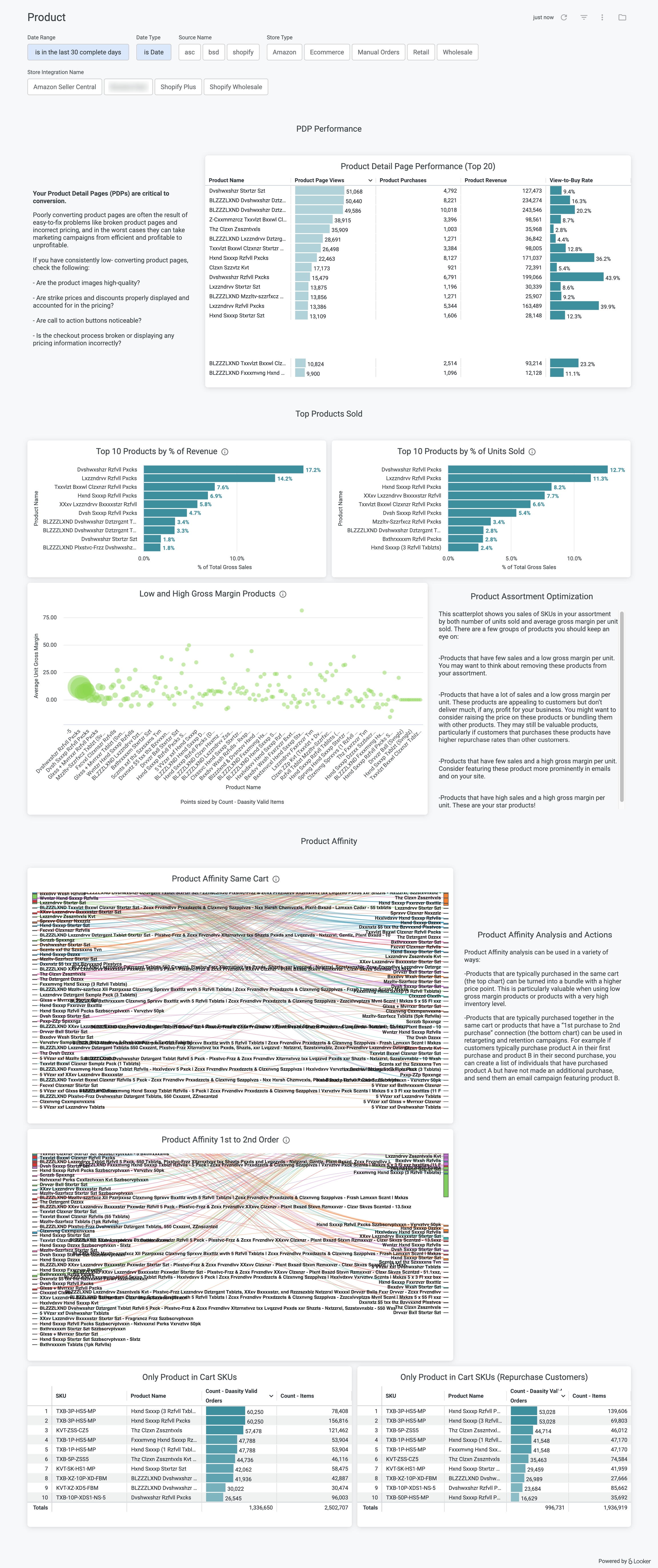Product
Product Performance Dashboard for all E-commerce channels
Overview
Knowing what products are selling, which products produce good gross margin per unit, and which products are typically purchased together is critical to optimizing your product portfolio and your overall business. Use this dashboard in conjunction with the Inventory Dashboard to make sure you always have enough of the products that matter most to your customers.
The analysis contained in this dashboard will allow you to answer questions related to your product portfolio such as the following:
Are there any products with conversion problems due to the design / set up of the product page?
Which products should you use as acquisition SKUs?
Which products should you feature in emails to existing customers?
How can you segment your customer file based on which products they've purchased?

Data sources
The Product dashbord brings together data from a handful of explores:
Product Page explore — This contains data from Universal Analytics, Google Analytics 4, and Amazon Seller Central (Sales and Traffic reports must be acivated in the integration). This explore is used in the PDP Performance section.
Order & Order Line Revenue explore — This contains order data from your commerce integrations and is used in the Top Products Sold section and the "Only Product Sold" tiles.
Product Affinity explore — This contains order data from your commerce integrations and is used in the Product Affinity tiles.
Setup
This dashboard will be enabled by default. To get the full value, make sure to set up your Google Analytics 4 via API integration and that you have your SKU costs BSD completed.
Important notes
Google Analytics utilizes product SKU for PDP performance reporting. Best practice is to always use a different SKU for bundles or Free Gifts, else your PDP performance results may be inaccurate.
If you do not have SKU costs and shipping / fulfillment costs populated (either through a BSD sheet or through an integration with Shopify or a fulfillment provider), then your gross margin calculations will not be accurate.
If you see products that appear to have negative gross margin this is likely caused by returns (our model assumes that a returned product cannot be resold so there is no revenue but there is product cost and shipping and fulfillment cost associated with those orders), or incorrect SKU cost / shipping and fulfillment costs in the BSD or coming from an integration.
Was this helpful?